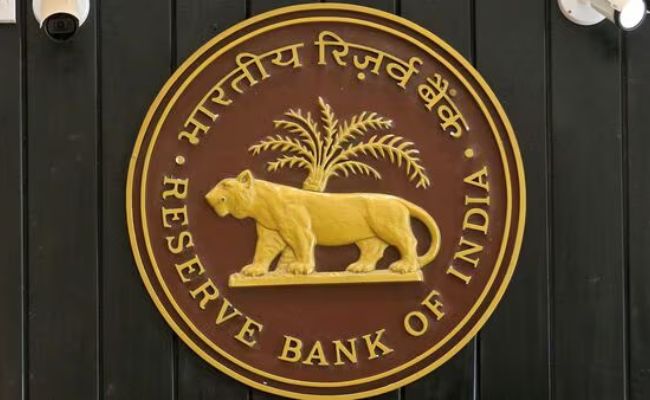Unified Lending Interface (ULI) and Its Future in RBI’s New Trinity: JAM, UPI, and ULI

India’s financial ecosystem is undergoing a digital revolution, with the Reserve Bank of India (RBI) leading the charge by creating a new trinity of financial inclusion and digitization. This trinity JAM (Jan Dhan, Aadhaar, Mobile), UPI (Unified Payments Interface), and the recently conceptualized ULI (Unified Lending Interface) represents a comprehensive and forward-thinking approach to transforming the financial landscape of India.
While JAM focuses on financial inclusion and UPI has revolutionized digital payments, the Unified Lending Interface (ULI) is poised to play a critical role in democratizing access to credit. Together, this trinity promises to not only bridge the gaps in the financial system but also empower individuals and businesses to thrive in the digital economy.
What is Unified Lending Interface (ULI)?
The Unified Lending Interface (ULI) is a digital platform that aims to streamline the lending process by integrating lenders (banks, non-banking financial companies, fintech’s) and borrowers (individuals and businesses) on a single platform. ULI acts as a centralized system that simplifies the process of applying for loans and assessing creditworthiness by leveraging data from various digital sources. The goal is to democratize credit access, especially for underserved segments like small businesses, farmers, and individuals without traditional credit histories.
ULI can be thought of as the “UPI of lending,” where just as UPI brought about a revolution in digital payments, ULI is expected to do the same for lending by making it seamless, transparent, and accessible for all.
Key Components of the New Trinity
1. JAM (Jan Dhan, Aadhaar, Mobile)
The JAM trinity comprising Jan Dhan bank accounts, Aadhaar, and mobile connectivity has laid the groundwork for financial inclusion across India. It provides individuals with access to formal banking services, including savings accounts, direct benefit transfers (DBTs), and digital identity verification through Aadhaar.
By bringing millions of unbanked individuals into the formal financial system, JAM has enabled greater participation in the economy, making it a key foundation for initiatives like UPI and ULI.
2. UPI (Unified Payments Interface)
The Unified Payments Interface (UPI) has transformed the way Indians conduct digital transactions. Launched in 2016, UPI enables instant, real-time payments across different banks through mobile devices, eliminating the need for cash and reducing the complexity of traditional payment methods.
UPI has dramatically increased the volume of digital payments in India, fostering a cashless economy and empowering small businesses and consumers alike. With its ease of use and security features, UPI has become a global success story and a symbol of India’s digital innovation.
3. ULI (Unified Lending Interface)
The newest addition to the trinity, Unified Lending Interface (ULI), builds on the foundation created by JAM and UPI. While JAM focused on bringing people into the financial system and UPI on facilitating seamless digital payments, ULI aims to close the gap in access to formal credit by creating a unified lending ecosystem.
ULI simplifies and accelerates the lending process, allowing borrowers to access multiple lenders through a single platform. It uses alternative data sources such as Aadhaar, GST filings, bank statements, and digital transactions to assess creditworthiness, making credit accessible to those without traditional financial records.
How ULI Works
ULI is designed to integrate with India’s existing digital infrastructure, ensuring a seamless flow of information between borrowers and lenders. Here’s how the system operates:
1. Unified Application:
Borrowers can apply for loans through ULI using a single, standardized platform. Instead of manually applying to multiple lenders, the platform connects borrowers with a range of banks, NBFCs, and fintech companies.
2. Data-Driven Credit Evaluation:
ULI leverages comprehensive financial and transactional data from various sources, including Aadhaar authentication, UPI transaction history, and tax filings (for businesses). This data-driven approach enables lenders to assess the creditworthiness of borrowers with greater accuracy.
3. Faster Loan Approvals:
Automation is at the core of ULI, allowing for quicker processing and approval of loans. For smaller loans or microcredit, approvals can be near instant, while for larger loans, the system reduces the time spent on documentation and verification.
4. Access to Credit for All:
ULI prioritizes credit access for underserved segments like small and medium-sized enterprises (SMEs), rural borrowers, and individuals without established credit histories. By incorporating alternative credit scoring models and reducing dependence on traditional credit bureaus, ULI creates opportunities for financial inclusion.
The Future of ULI in India’s Financial Ecosystem
As part of the RBI’s new trinity, ULI has the potential to transform the credit landscape in India. Here’s a look at the promising future it holds:
1. Bridging the Credit Gap for MSMEs
One of the most significant impacts of ULI will be on Micro, Small, and Medium Enterprises (MSMEs). Traditionally, MSMEs have struggled to access formal credit due to a lack of collateral and insufficient credit history. ULI can revolutionize MSME lending by using real-time transaction data, GST filings, and other digital footprints to assess creditworthiness. This would empower small businesses to access working capital, expand their operations, and contribute to economic growth.
2. Driving Financial Inclusion
ULI is set to play a pivotal role in expanding financial inclusion. In rural areas and among low-income households, access to formal credit has been limited. By integrating with the Aadhaar ecosystem and using digital transaction data from UPI, ULI can offer tailored credit products to individuals who have been excluded from traditional banking systems. This would foster equitable growth and reduce dependence on informal lending sources.
3. Faster, More Transparent Lending
ULI’s platform-based approach eliminates much of the opacity that surrounds traditional lending practices. Borrowers will be able to compare loan products from various lenders, ensuring that they receive competitive interest rates and transparent terms. With automation driving faster loan approvals, ULI will significantly reduce the time and effort required to secure loans.
4. Boosting the Digital Economy
Just as UPI has driven the adoption of digital payments, ULI is expected to boost the growth of digital lending. This shift to digital lending will not only improve credit access but also create a more robust and resilient financial ecosystem. ULI’s success could further inspire innovations in credit products, including peer-to-peer lending, microfinance, and AI-driven credit assessments.
5. Global Implications
India’s innovative approach to financial inclusion through JAM, UPI, and ULI has the potential to set a global precedent. As other countries observe the success of this trinity, India’s model could be replicated in emerging economies to address similar challenges related to financial exclusion and access to credit.
Conclusion
The Unified Lending Interface (ULI), as part of the RBI’s new trinity alongside JAM and UPI, is set to revolutionize the way credit is accessed and delivered in India. By simplifying the lending process, leveraging data analytics, and promoting financial inclusion, ULI promises to unlock opportunities for millions of individuals and businesses. As it evolves, ULI will be instrumental in shaping a more inclusive and equitable credit system, furthering India’s vision of a digitally empowered economy.
The new trinity JAM, UPI, and ULI represents a bold step toward a future where financial services are accessible, transparent, and efficient for all. ULI’s role in democratizing credit access makes it an essential pillar in India’s journey toward comprehensive financial inclusion and economic prosperity.
Authored By:
Sumit Roy,
Chief Manager Faculty (ULA-DT),
Union Bank of India,
Union Learning Academy: Digital Transformation,
Opposite Powai Lake, Powai,
Andheri (East), Mumbai, 400072




